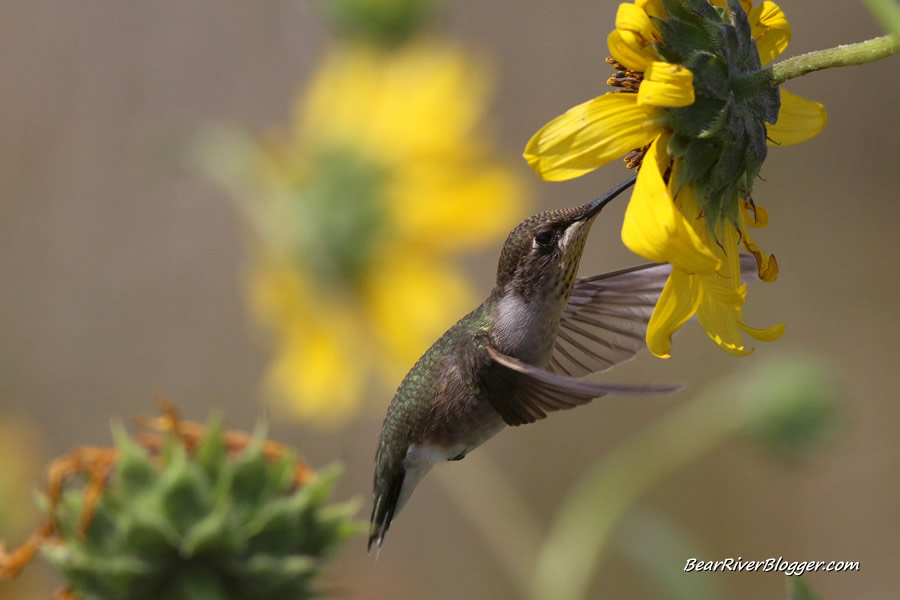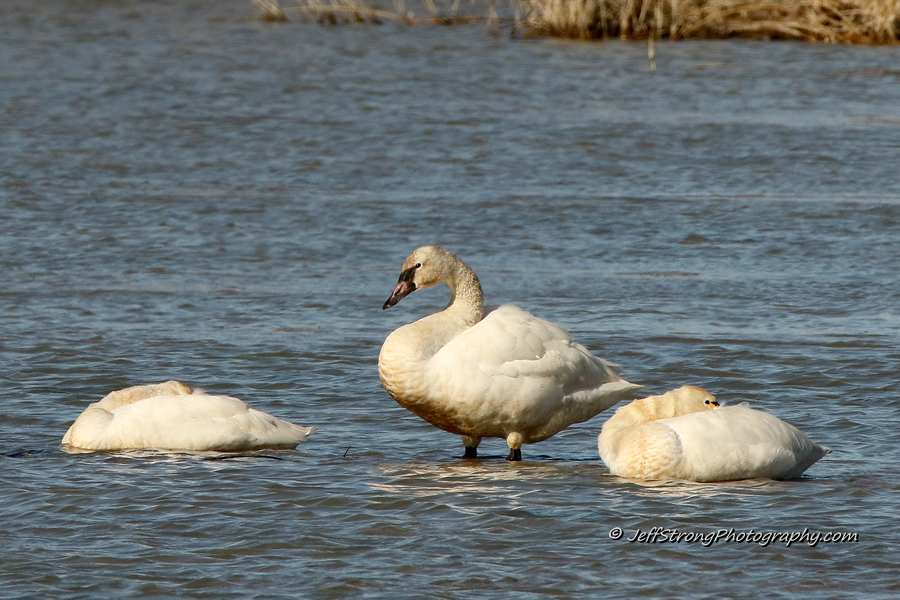As I sit here at the computer and reflect upon years and years of nature photography, two things come to mind.
First, I sure do love photographing hummingbirds against wildflowers. But honestly, what nature photographer doesn’t cherish the opportunity to photo and watch hummingbirds feasting on nature’s bounty?
And second, I love to photograph birds on the Bear River Migratory Bird Refuge auto tour route. I love it so much and if truth be told, that is actually the seed that sprouted this blog a few years ago.
Now if I had any say in the matter, it would seem only natural that someday those two passions of mine would somehow, someway, someday eventually intersect.
Well, my bird-loving friends, today is, in fact, that very day.
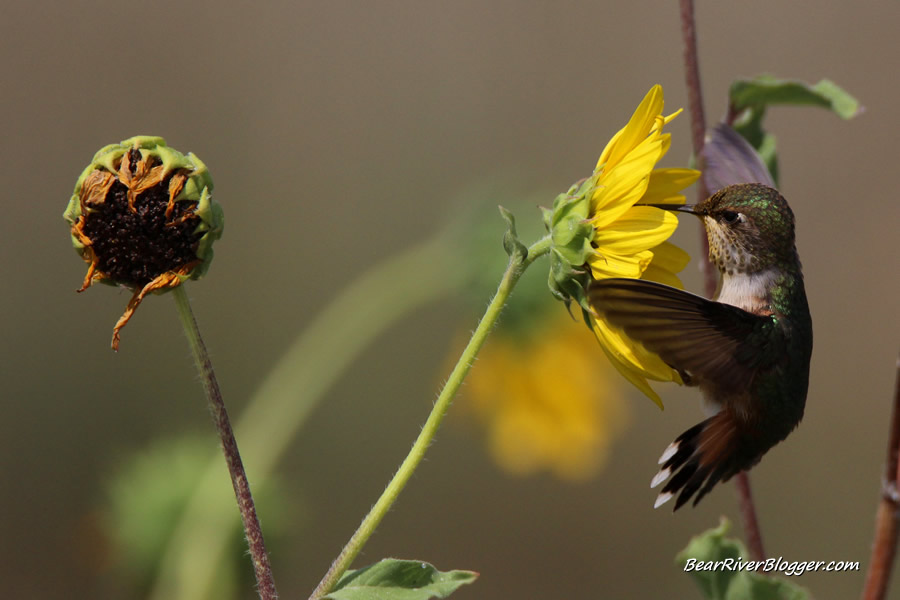
I mean, seriously, what are the odds of actually finding and photographing hummingbirds on a 77,000-acre wetland nature preserve? Up until today, my guess was next to zero, if truth be told.
On the surface, it might seem like a long shot to photograph hummingbirds in a marsh, but from what I came across today, it might not be as much of a long shot as I first thought.
It is late August and the hummingbird migration is in full swing.
And if you have been out to the refuge lately, you would notice the wild sunflowers are also doing their yearly thing, blooming alongside the auto tour route in large brilliantly colored yellow patches.
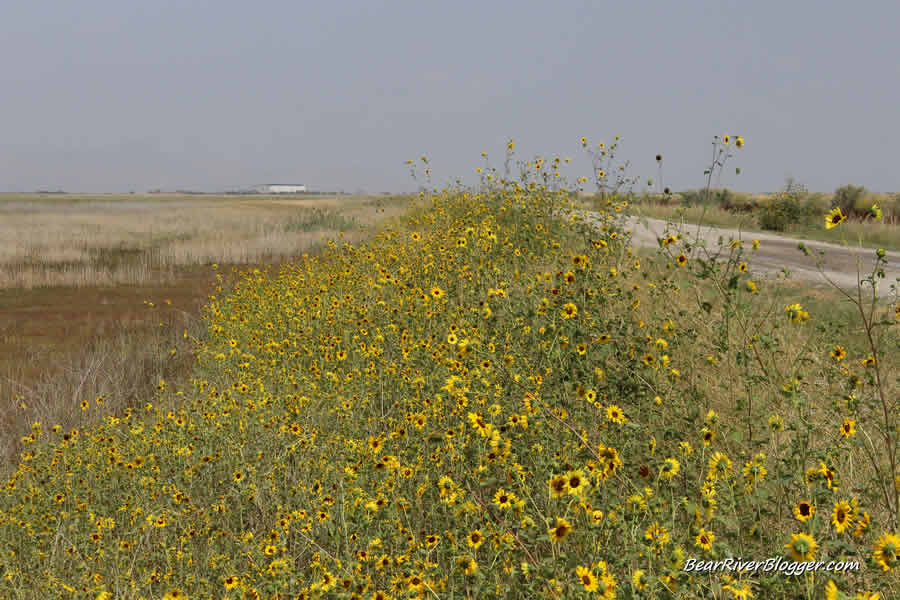
Put those two together and you have a great afternoon behind a camera, as I can attest to from the events of this very day.
It might not be common knowledge but the Bear River Migratory Bird Refuge does attract hummingbirds during fall migration as they stop over and feed on the large patches of sunflower blooms.
Hummingbirds are incredibly small birds and you really have to pay attention to find them on the refuge during fall migration, but they are indeed there.
In years past, I have seen one or two hummingbirds in very brief and random chance encounters.
But as I look back, it never dawned on me to go look for them when the sunflowers are in bloom.
I literally just assumed finding a hummingbird on the Bear River Bird Refuge was similar to finding a needle in a 77,000-acre haystack.
Well, it’s not if you know when and where to look and have the patience to sit and watch for a bit.
The key is to find large patches of blooming wild sunflowers along the edge of the gravel road and stop, watch, and listen.
Hummingbirds are very attracted to and readily feed on the nectar from wild sunflowers, and the Bear River Bird Refuge auto tour route currently has plenty of blooming sunflowers lining various parts of the road.
Honestly, I just never put two and two together and thought I could easily find hummingbirds on the refuge until today.
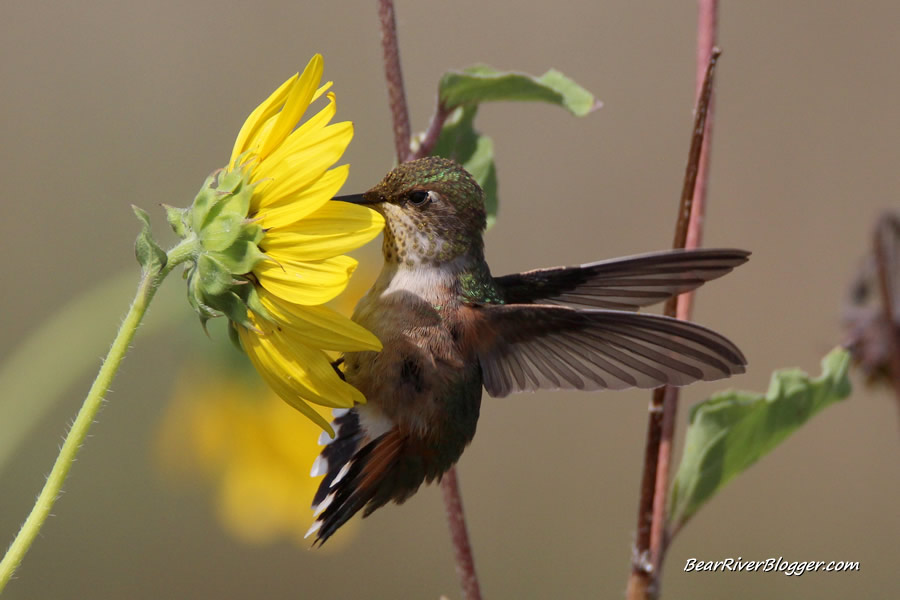
I plant Mexican sunflowers in my yard for hummingbirds each year, but the notion of searching for hummingbirds on the refuge’s bountiful sunflower blooms never ever crossed my mind until a chance encounter with a hummingbird happened this very afternoon.
Once I came across the first one, I actually found quite a few hummingbirds all up and down the last leg of the auto loop, just a few miles before it returned back to the main parking lot.
Now I have to admit, I wasn’t out on the refuge today to look for and to photograph hummingbirds against sunflowers, not by a long shot.
Honestly, that never crossed my mind until I reached the sunflowers and slowed down to look for migrating monarch butterflies, something I do find quite readily on the refuge during late summer in most years.
As I scanned the sunflowers, no monarchs were seen but something caught my eye.
At first, I thought it was a sphinx moth, commonly called a hummingbird moth, as I do see them out on the refuge fairly consistently this time of year.
But it ended up being one of the nicest surprises I have ever had on the Bear River Bird Refuge, a female broadtail hummingbird was going up and down the large patch of sunflowers to feed on the colorful blooms.
She wasn’t alone either. What I think was a young rufous hummingbird ended up chasing her back my way.
And as I walked up and down the gravel road, armed with my camera at the ready, several more hummingbirds showed themselves as they investigated the large patch of sunflowers.
The only frustration of the day was the never-ending wind that made photographing the hummingbirds a tall task, a very tall task to say the least.
The images aren’t as sharp as I would have hoped for, but taking into consideration the breeze that kept blowing the blooms back and forth, I guess I can’t complain too much about how my images turned out.
I did observe, however, an interesting behavior I had not known about until today, thanks to the uninvited wind, that is.
Because of the wind, hummingbirds will grasp the sunflower petals with their tiny feet to hold on to as the flowers swayed back and forth, making it easier for these delicate birds to feed on the nectar in the soft but very annoying breeze.
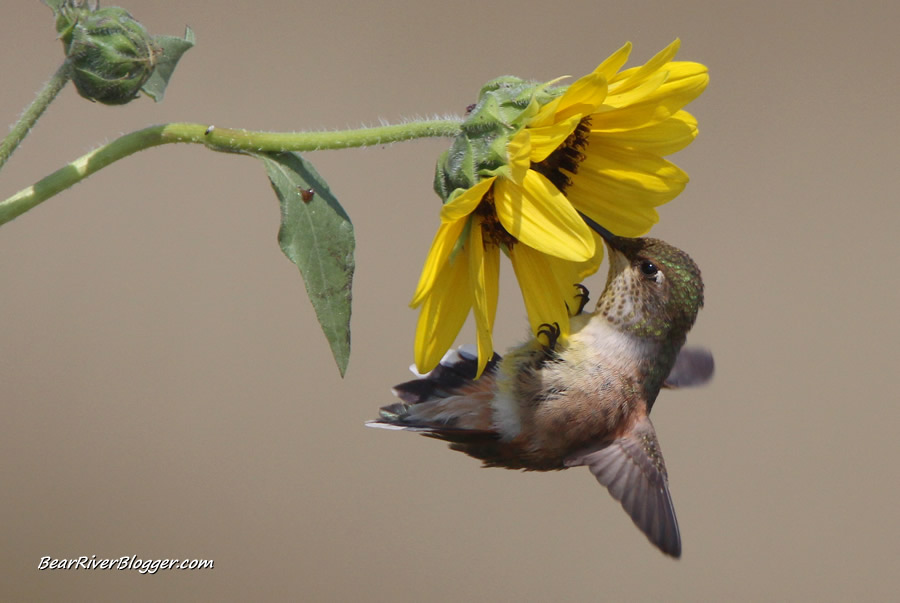
This happened not only once but dozens of times as I watched and tried to photograph the birds in the wind.
Also, if you look closely at the image I enlarged, you will see pollen on the chest and beak of the hummingbird.
Hummingbirds are, in fact, pollinators and can help transfer pollen between flowers just as bees and butterflies do.
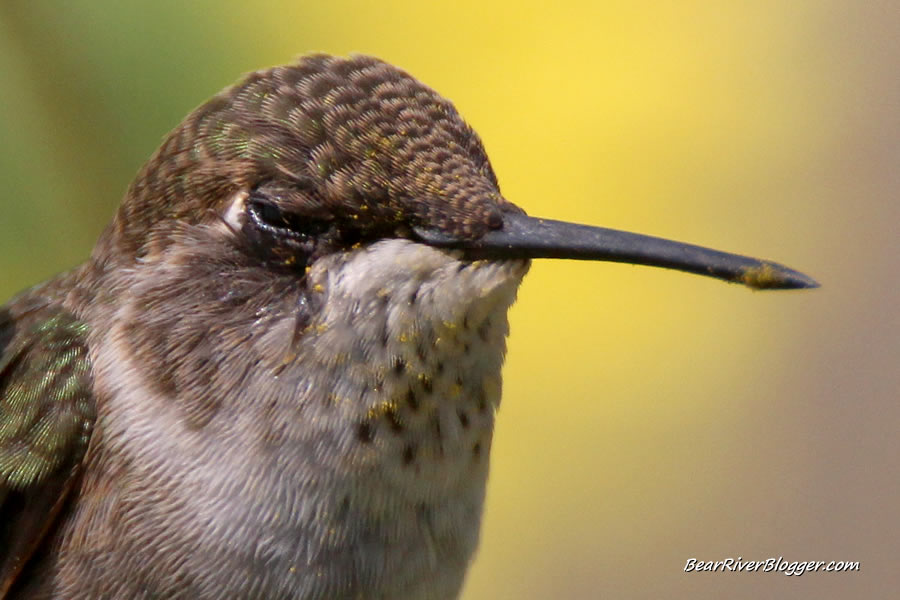
Bees are, without question, the workhorse pollinators in nature and do most of the pollinating. But hummingbirds are also classified as pollinators and are known to help in the pollination process as well.
So, all in all, it was one of the best bird-watching days I have ever had on the Bear River Migratory Bird Refuge and quite possibly the best day of bird photography and discovery I have had this year on the refuge by far.
Don’t forget to subscribe to our blog for email notifications for future blog posts. Feel free to share this post with your friends and family, either on social media or in person.
Taking time to visit nature is such a great way to relax. So let’s get the word out on how great the Bear River Migratory Bird Refuge is by sharing our blog to any and all that might appreciate birds, bees, butterflies, and all the other interesting creatures that live both on and off the refuge.
Visit our online store for great shirts, sweats, hoodies, and gifts for you or your nature-loving friends.
Use promo code save20 for 20% off all items in our store as a thank you for following our blog and supporting our efforts to enlighten and entertain through our photography excursions.
